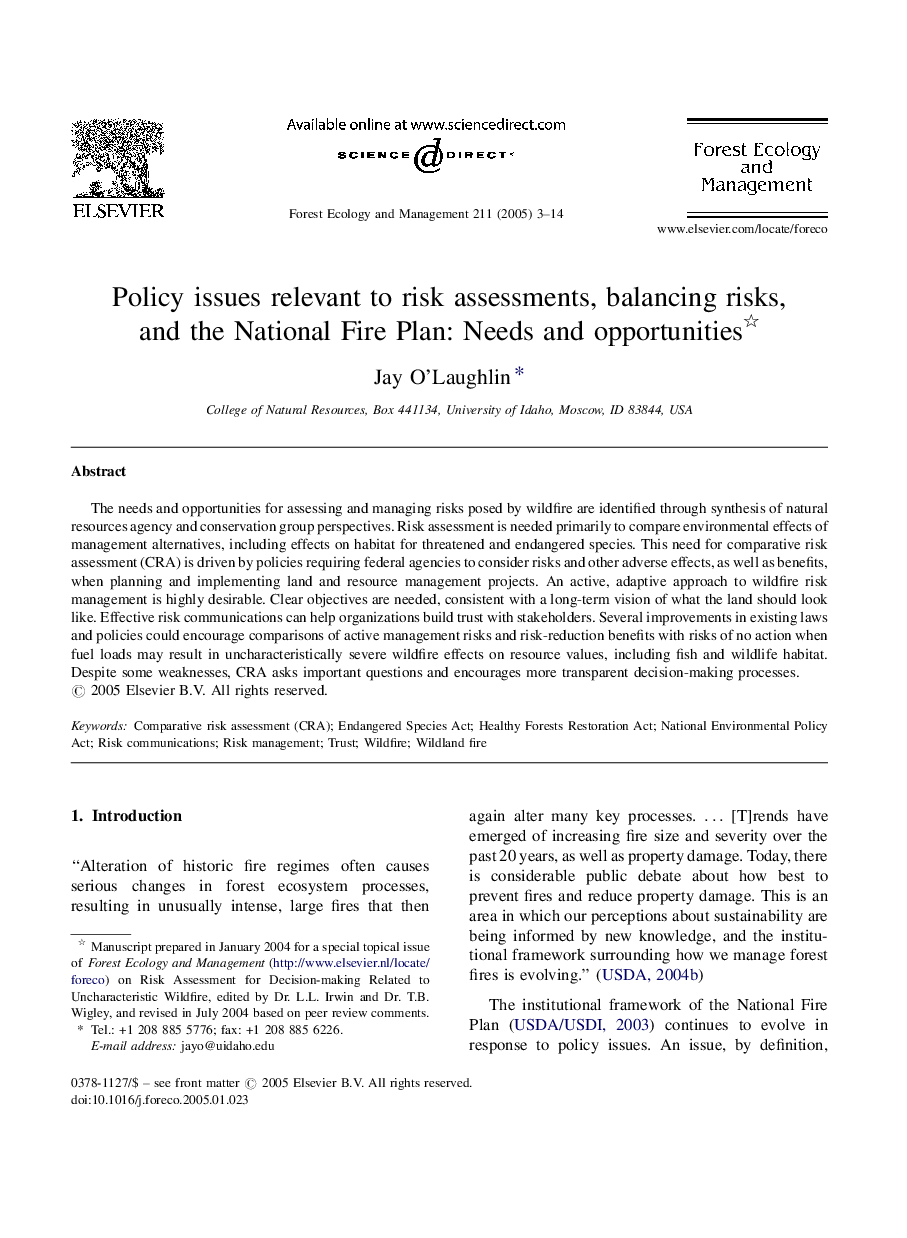| Article ID | Journal | Published Year | Pages | File Type |
|---|---|---|---|---|
| 9620332 | Forest Ecology and Management | 2005 | 12 Pages |
Abstract
The needs and opportunities for assessing and managing risks posed by wildfire are identified through synthesis of natural resources agency and conservation group perspectives. Risk assessment is needed primarily to compare environmental effects of management alternatives, including effects on habitat for threatened and endangered species. This need for comparative risk assessment (CRA) is driven by policies requiring federal agencies to consider risks and other adverse effects, as well as benefits, when planning and implementing land and resource management projects. An active, adaptive approach to wildfire risk management is highly desirable. Clear objectives are needed, consistent with a long-term vision of what the land should look like. Effective risk communications can help organizations build trust with stakeholders. Several improvements in existing laws and policies could encourage comparisons of active management risks and risk-reduction benefits with risks of no action when fuel loads may result in uncharacteristically severe wildfire effects on resource values, including fish and wildlife habitat. Despite some weaknesses, CRA asks important questions and encourages more transparent decision-making processes.
Keywords
Related Topics
Life Sciences
Agricultural and Biological Sciences
Ecology, Evolution, Behavior and Systematics
Authors
Jay O'Laughlin,
